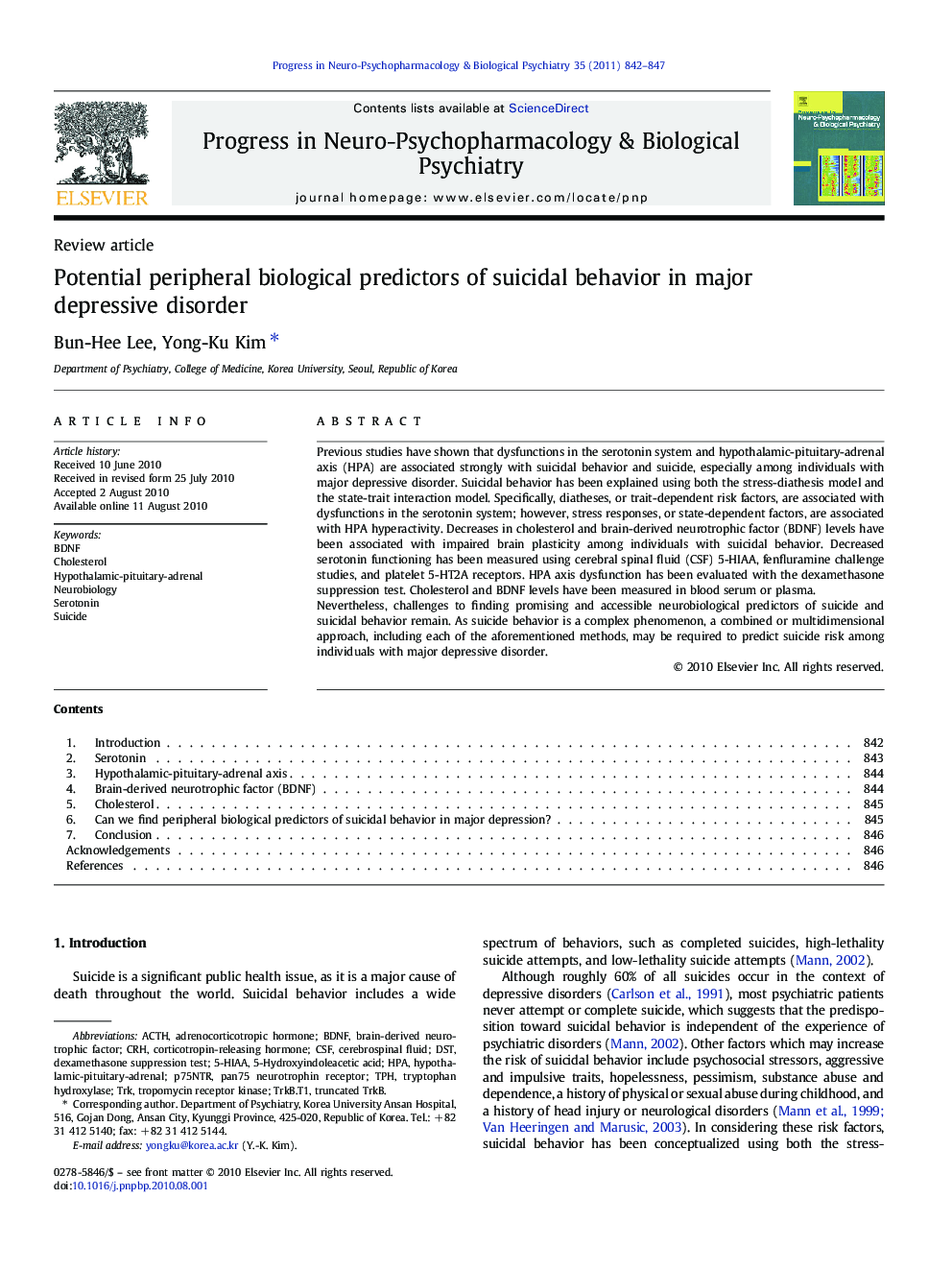| Article ID | Journal | Published Year | Pages | File Type |
|---|---|---|---|---|
| 2565217 | Progress in Neuro-Psychopharmacology and Biological Psychiatry | 2011 | 6 Pages |
Previous studies have shown that dysfunctions in the serotonin system and hypothalamic-pituitary-adrenal axis (HPA) are associated strongly with suicidal behavior and suicide, especially among individuals with major depressive disorder. Suicidal behavior has been explained using both the stress-diathesis model and the state-trait interaction model. Specifically, diatheses, or trait-dependent risk factors, are associated with dysfunctions in the serotonin system; however, stress responses, or state-dependent factors, are associated with HPA hyperactivity. Decreases in cholesterol and brain-derived neurotrophic factor (BDNF) levels have been associated with impaired brain plasticity among individuals with suicidal behavior. Decreased serotonin functioning has been measured using cerebral spinal fluid (CSF) 5-HIAA, fenfluramine challenge studies, and platelet 5-HT2A receptors. HPA axis dysfunction has been evaluated with the dexamethasone suppression test. Cholesterol and BDNF levels have been measured in blood serum or plasma.Nevertheless, challenges to finding promising and accessible neurobiological predictors of suicide and suicidal behavior remain. As suicide behavior is a complex phenomenon, a combined or multidimensional approach, including each of the aforementioned methods, may be required to predict suicide risk among individuals with major depressive disorder.
Research Highlights► This reviews peripheral biological markers of suicide in major depression. ► Serotonin dysfunction is associated with suicide trait- dependent factors. ► HPA dysfunction is associated with suicide state-dependent risk factors. ► Lower cholesterol and BDNF levels are related to brain dysfunctions in suicides. ► Suicide, a complex phenomenon needs a multi-dimensional approach to predict.
